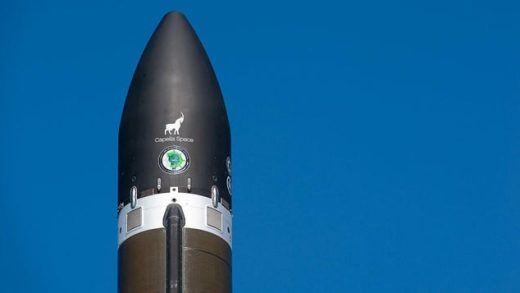On a recent morning at his home in Los Angeles, Héctor Tobar, Pulitzer Prize–winning journalist and expert chronicler of the Latino experience, sat down with a bowl of oatmeal he’d whipped up for breakfast after dropping his daughter off at school. He wants to talk about the day he encountered the strange, true story of Joe Sanderson, a 20th-century thrill seeker and failed novelist from Urbana, Ill., who is the subject of Tobar’s epic new novel, The Last Great Road Bum, due out in June from MCD.
Sanderson traveled the world in the 1960s and ’70s, then became a guerilla fighter in the Salvadoran Civil War. So what drew Tobar to a man who is a relative unknown? “I want people to think of Joe Sanderson as one of the great American adventurers of his time—as someone who’s as worthy of being remembered as Jack Kerouac,” he says.


Tobar has written two other novels, The Tattooed Soldier and The Barbarian Nurseries, and two nonfiction works: Translation Nation, in which the author chronicles his own family history and travels across the United States to gather stories about the Latino experience, and Deep Down Dark, an account of the 2010 mining disaster in Copiapó, Chile. Before he wrote Deep Down Dark, which spent seven weeks on The New York Times bestseller list, he was already thinking about Sanderson, whom he calls “an American Che Guevara,” whom he learned about while working in Mexico.
In 2008, Tobar was working as the Mexico City bureau chief for the Los Angeles Times when a research assistant told him about a war diary written by an American that was sitting in an archive in San Salvador, El Salvador. The diary belonged to Sanderson, who dropped out of college and spent his life traveling the world—Africa, Asia, Europe—in search of adventure and material to write the next great American novel.
Sanderson’s relentless quest for big experiences brought him to El Salvador in 1979, where he joined up with guerillas who opposed the U.S.-backed military junta and became a fighter (code name: Lucas). He died in battle in 1982 at age 39. His diary and other papers, which were found stashed in his backpack, became part of the revolution archive at the Museo de la Palabra y la Imagen in San Salvador.
“Joe’s story was begging to be written,” Tobar says. Initially, though, he didn’t know how to approach his subject. It would take years, and multiple stalled nonfiction book proposals, for him to find the answer. In the meantime, he gathered the material he’d later weave into his novel.
Tobar spoke with former rebels who’d fought alongside Sanderson. “I heard stories of Joe winning a shooting contest,” he says, noting that Sanderson was known to be a great marksman, “and of Joe teaching rebels how to swim.” And Tobar tracked down Sanderson’s brother, Steve Sanderson, in the States, who gave him access to letters Sanderson wrote to their mother. Steve also shared his brother’s fiction, which Tobar—who is currently a writing professor at the University of California, Irvine—admits isn’t good.
“I’m a generous grader,” Tobar says, “so I’d probably give him a B−.”
Despite the grade, Tobar, who briefly put aside newspaper work in the 1990s to get his MFA in creative writing from the University of California, Irvine, identified with Sanderson’s dream to write fiction. “I would definitely choose fiction writing over nonfiction if I had to,” he says.
It was the success of Deep Down Dark that motivated Tobar to write Sanderson’s story as a novel. According to Farrar, Straus and Giroux, Tobar’s books have been translated into 15 languages and have sold approximately 250,000 copies in North America across all formats, with Deep Down Dark accounting for about half of those sales. But after Deep Down Dark, he hit a crossroads. “I realized if I wrote another book of nonfiction I would never write another novel again,” Tobar says. “There was a voice in my head saying, ‘Nonfiction is all I’m going to be known for.’” So he revisited Sanderson’s story and began to see him as “a man who was trying to live his life like a character in a novel that he never succeeded in writing.”
Tobar got swept up in the idea and wrote the book the real Joe Sanderson couldn’t.

“It’s a novel, but it sits next to Into the Wild and other great nonfiction books,” says Tobar’s editor Sean McDonald of The Last Great Road Bum. “The way it pulls together the strands of Héctor’s writing career is thrilling.”
The son of Guatemalan immigrants, Tobar was born in L.A. in 1963. He spoke Spanish growing up and is firmly entwined with his roots. He’s been married for 26 years and has three kids and what he describes as a “poorly behaved but loyal” dog. He’s friendly and open but says he’s a loner.
“It’s taken me time to overcome a lot of the insecurities that led me to become a writer,” Tobar says. “I was an only child. I was always seeking my father’s approval. I always wanted to be an A student. And so becoming a writer was a way to show the world how special I am.”
Jay Mandel, Tobar’s agent at William Morris Endeavor, calls him “a Swiss Army knife of a writer.” He adds that Tobar is “both deeply American and deeply Central American,” and that this offers him a unique perspective as a storyteller.
Tobar’s powers are on full display in his latest, which uses the treasure trove of letters and diaries Sanderson left behind to create a story of love, war, and art that spans cultures.
Tobar admits he got some weird looks when he started telling people that his latest protagonist is a white guy. “Some people were disappointed that a Latino writer would choose to write a novel from the perspective of a white male,” he says. But he relishes defying expectations. “It’s important to think about working across, and imagining across, ethnic lines. If we as writers of color only think of ourselves as writing inside this channel of, say, Latino history, then we… well, I am depriving myself of a deeper understanding of the full truth of the country in which I live.”
Tobar’s next projects include a survey of Latino life in the Trump age and a trilogy of novels about L.A.
As the conversation winds down and his dog lets out an impatient bark, Tobar tells the story of the time his immigrant father built a fence around the house where Tobar and his family currently live. His father blew out his car engine hauling wood and had bloody hands every day as he hammered away. “But he stubbornly worked at this fence and finished it,” Tobar says. “And it’s beautiful. How he worked on that…That’s the way I write.”
Tobar nods as he reflects on the 11 years—research and all—it took to complete The Last Great Road Bum. “I put everything into that book,” he says. “I fought for every sentence. I left it all on the page.”
This piece was produced in partnership with Publishers Weekly.
The post On the Road with Héctor Tobar appeared first on The Millions.
Source : On the Road with Héctor Tobar










